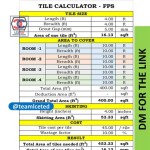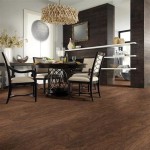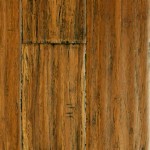Glue Engineered Wood Flooring To Concrete: A Comprehensive Guide
Engineered wood flooring offers a compelling blend of aesthetic appeal and practical durability, making it a popular choice for residential and commercial spaces. When installing engineered wood over a concrete subfloor, utilizing adhesives is a common and effective method. This approach, often referred to as "gluing down," provides a stable and secure foundation, enhancing the floor's longevity and performance. However, successful glued-down installations hinge on meticulous preparation, appropriate adhesive selection, and adherence to best practices. This article provides a detailed guide to the process of gluing engineered wood flooring to concrete, covering key aspects from surface preparation to adhesive application.
Understanding Engineered Wood Flooring and Concrete Compatibility
Engineered wood flooring, unlike solid hardwood, comprises multiple layers, typically with a hardwood veneer bonded to a core of plywood or high-density fiberboard. This construction imparts greater dimensional stability, making it less susceptible to expansion and contraction due to moisture fluctuations compared to solid wood. This characteristic makes it a suitable choice for installation over concrete subfloors, which often exhibit varying levels of moisture content. Concrete, a porous material, can absorb and release moisture, potentially impacting the stability of flooring materials. However, with proper preparation and the use of appropriate adhesives, engineered wood can be successfully installed on concrete.
The key to a successful installation lies in understanding the specific properties of both the engineered wood flooring and the concrete subfloor. Factors such as the thickness of the engineered wood, the species of the wood veneer, and the density of the core material will influence the choice of adhesive. Similarly, the concrete's age, porosity, and moisture content are critical considerations. Freshly poured concrete requires adequate curing time and moisture testing before any flooring installation can commence. Existing concrete floors may have cracks, unevenness, or surface contaminants that need to be addressed to ensure proper adhesion.
Essential Steps for Preparing the Concrete Subfloor
Proper subfloor preparation is arguably the most crucial stage in gluing engineered wood flooring to concrete. A poorly prepared surface can compromise the adhesive bond, leading to issues such as cupping, gapping, and delamination. The following steps outline the essential processes involved in preparing the concrete subfloor:
1. Moisture Testing: Concrete's moisture content is a primary concern. Excessive moisture can prevent the adhesive from bonding correctly and can lead to moisture-related flooring failures. Moisture levels should be tested using a calibrated moisture meter. Common methods include the calcium chloride test (ASTM F1869) and the relative humidity test (ASTM F2170). These tests provide quantitative measurements of moisture levels, allowing installers to determine if the concrete is within acceptable limits for the chosen adhesive. Generally, adhesives require moisture vapor emission rates (MVER) below a certain threshold, often specified by the manufacturer. If moisture levels exceed the recommended limits, mitigation strategies, such as applying a moisture barrier, are necessary.
2. Cleaning and Debris Removal: The concrete surface should be thoroughly cleaned to remove any dust, dirt, debris, paint, adhesive residue, or other contaminants that could interfere with the adhesive bond. Sweeping and vacuuming are essential first steps. For stubborn contaminants, scrubbing with a neutral pH cleaner followed by a thorough rinse is recommended. Oil-based contaminants require specialized degreasers. Ensure the concrete is completely dry before proceeding.
3. Leveling and Repairing Imperfections: Concrete subfloors are often uneven. Leveling is crucial for a professional-looking and structurally sound installation. Small imperfections can be addressed with self-leveling underlayments. These products are cement-based compounds that are poured onto the floor and allowed to spread and harden, creating a smooth and level surface. For larger cracks or significant unevenness, patching compounds or concrete resurfacing may be required. Allow all leveling and patching materials to fully cure according to the manufacturer's instructions before proceeding with the flooring installation.
4. Scarifying or Grinding (if necessary): If the concrete surface is too smooth or has a sealed surface, scarifying or grinding may be necessary to create a profile that will accept the adhesive. Scarifying involves using a machine with rotating cutters to roughen the surface. Grinding utilizes diamond grinding wheels to achieve a similar effect. The goal is to create a slightly textured surface that provides "tooth" for the adhesive to grip. Ensure proper dust control measures are implemented during these processes, as concrete dust can be hazardous.
5. Priming (often recommended): Priming the concrete surface can enhance the adhesive bond, particularly on porous concrete. Primers penetrate the concrete pores, creating a more uniform and receptive surface for the adhesive. Choose a primer that is compatible with both the concrete and the chosen adhesive. Apply the primer according to the manufacturer's instructions, ensuring even coverage. Allow the primer to dry completely before applying the adhesive.
Selecting the Appropriate Adhesive for Engineered Wood and Concrete
Choosing the right adhesive is paramount for a long-lasting and trouble-free installation. Several types of adhesives are suitable for gluing engineered wood flooring to concrete, each with its own characteristics and advantages:
1. Urethane Adhesives: Urethane adhesives are generally considered the gold standard for gluing engineered wood to concrete. They offer excellent bond strength, flexibility, and resistance to moisture. Urethane adhesives are available in various formulations, including moisture-cure and non-moisture-cure options. Moisture-cure urethanes react with moisture in the air and the substrate to form a strong bond, while non-moisture-cure urethanes rely solely on chemical reaction. Urethane adhesives are known for their ability to accommodate slight movement in the flooring system, minimizing the risk of bond failure.
2. Modified Silane Polymer (MSP) Adhesives: MSP adhesives, also known as silane-modified polymer adhesives, are another excellent choice for gluing engineered wood to concrete. They offer similar advantages to urethane adhesives, including strong bond strength, flexibility, and moisture resistance. MSP adhesives are often considered environmentally friendly, as they are typically low in volatile organic compounds (VOCs). They also tend to be easier to clean up than urethane adhesives.
3. Acrylic Adhesives: Acrylic adhesives are water-based and generally less expensive than urethane or MSP adhesives. While they can be suitable for some engineered wood flooring installations over concrete, they typically offer lower bond strength and moisture resistance. Acrylic adhesives are best suited for installations in dry environments with stable humidity levels. It's crucial to carefully review the adhesive manufacturer's recommendations and ensure the acrylic adhesive is specifically designed for gluing engineered wood to concrete.
Factors to consider when selecting an adhesive:
- Moisture content of the concrete: Choose an adhesive that is compatible with the measured moisture levels in the concrete.
- Type of engineered wood flooring: Different wood species and core materials may require specific adhesive formulations.
- Environmental conditions: Consider the temperature and humidity levels in the installation area.
- Adhesive VOC content: Opt for low-VOC adhesives to minimize indoor air pollution.
- Open time and working time: Choose an adhesive with an appropriate open time and working time to suit the installation process.
Always consult the adhesive manufacturer's technical data sheet for detailed information on product specifications, application instructions, and safety precautions.
The Process of Applying Adhesive and Installing Engineered Wood
Once the subfloor is properly prepared and the appropriate adhesive is selected, the installation process can begin. Follow these guidelines for applying the adhesive and installing the engineered wood flooring:
1. Acclimation: Before installation, acclimate the engineered wood flooring to the environment in which it will be installed. This typically involves storing the flooring in the room for several days to allow it to adjust to the temperature and humidity levels. Acclimation helps to minimize expansion and contraction after installation.
2. Adhesive Application: Apply the adhesive to the concrete subfloor using a notched trowel. The trowel notch size should be specified by the adhesive manufacturer. The notch size determines the amount of adhesive applied per square foot. Apply the adhesive in manageable sections, typically no more than what can be covered with flooring within the adhesive's open time. Avoid applying adhesive to large areas at once, as it may begin to skin over before the flooring can be installed.
3. Flooring Installation: Carefully place the engineered wood flooring planks onto the adhesive, ensuring they are properly aligned and engaged. Apply pressure to the planks to ensure good contact with the adhesive. Use a tapping block and rubber mallet to gently tap the planks into place. Maintain consistent spacing between planks, as specified by the flooring manufacturer.
4. Rolling: After installing a section of flooring, roll the area with a heavy roller. This helps to ensure uniform contact between the flooring and the adhesive and to remove any air pockets. Roll the flooring in both directions, ensuring consistent pressure across the entire surface.
5. Cleaning Adhesive: Immediately clean up any adhesive that gets on the surface of the flooring with a clean, damp cloth. Follow the adhesive manufacturer's recommendations for cleaning agents.
6. Curing Time: Allow the adhesive to fully cure according to the manufacturer's instructions before allowing heavy traffic on the floor. Curing times vary depending on the type of adhesive and the environmental conditions.
7. Expansion Gaps: Ensure adequate expansion gaps are left around the perimeter of the room and around any vertical obstructions, such as pipes or columns. These gaps allow for natural expansion and contraction of the flooring without causing stress or buckling.
By meticulously following these steps and adhering to the adhesive manufacturer's instructions, a durable and aesthetically pleasing engineered wood floor can be successfully installed over a concrete subfloor.

Installing Engineered Flooring On A Concrete Slab Fine Homebuilding

Installing Engineered Hardwood On Concrete Twenty Oak

How To Install Engineered Wood Flooring On Concrete

Installing Engineered Hardwood On Concrete Twenty Oak

How To Install Engineered Wood Flooring On Concrete
How To Install Wood Floors On Concrete Quora

How To Install Solid Wood Flooring On Concrete And Oak Specialists Suppliers Nexus

How To Install Engineered Hardwood Flooring Glue Down Time Lapse

Can You Glue Down Solid Wood Flooring Hardwood Guide Reallyfloors America S Est

How To Glue Down Engineered Wood Flooring Direct
Related Posts








